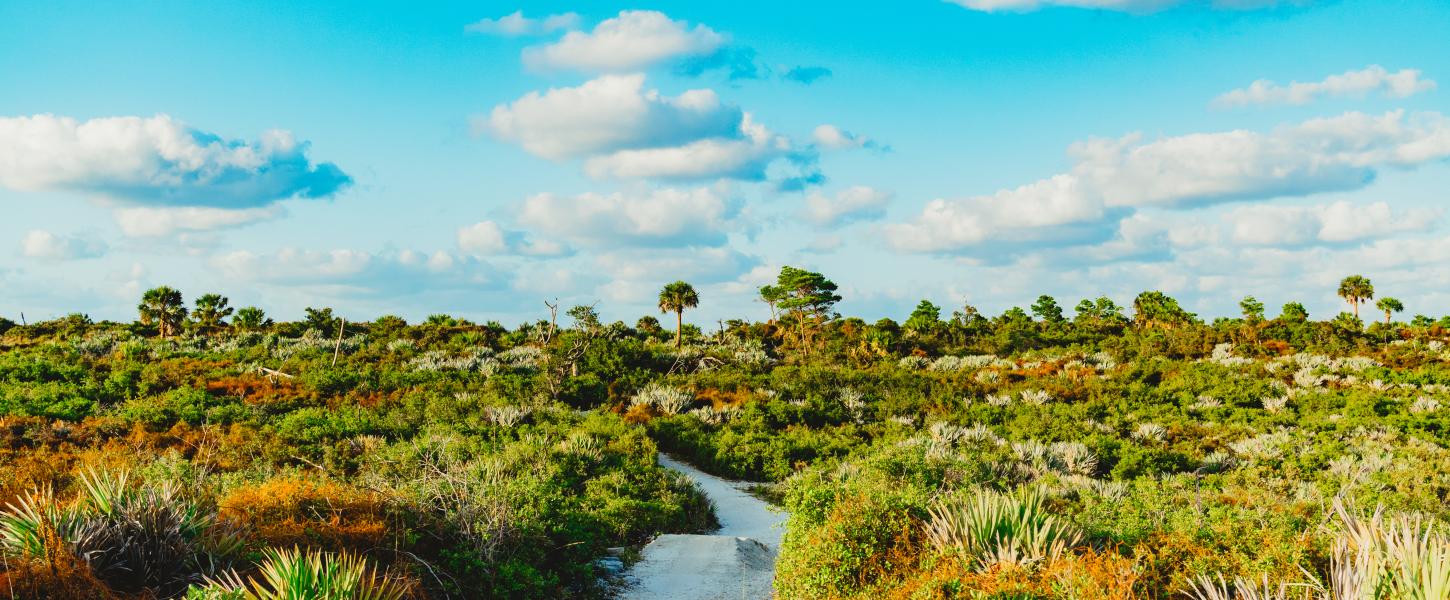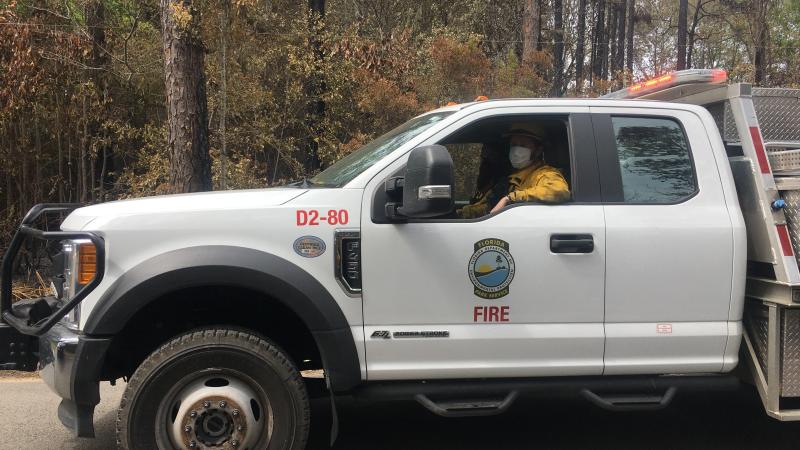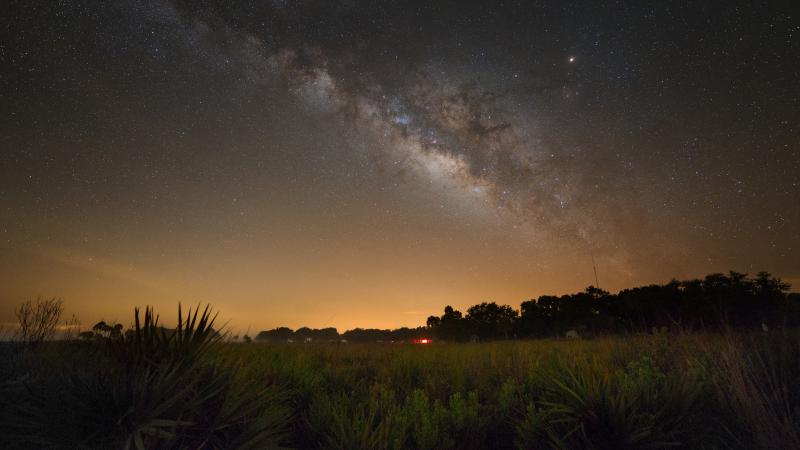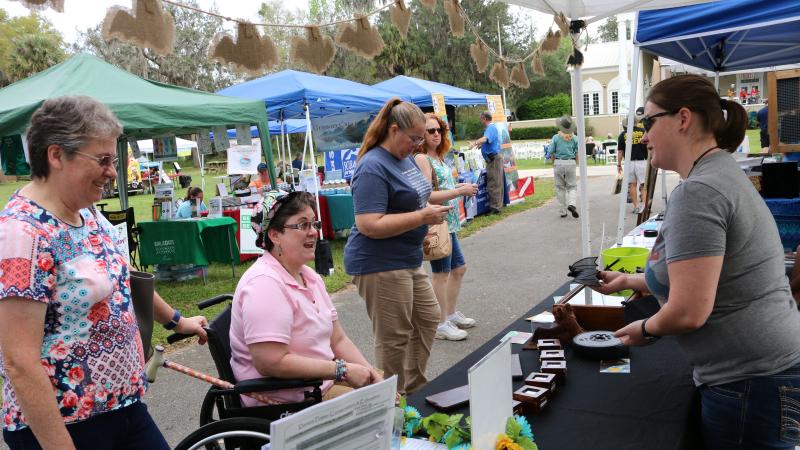Trails: Where Do They Come From, Where Do They Go?

Placed end to end, the trails in Florida State Parks would stretch from South Florida to New Hampshire. There are more than 1,500 miles of trails for walkers, hikers, bicyclists and equestrians. How did so many miles of trails come to be?
To answer our question, we talked to two members of the Florida Conservation Corps (FLCC), an AmeriCorps national service program stationed in Florida State Parks. Taylor Horton and Ryder Hochmuth are part of Project T.R.E.C., an FLCC team that travels the state building and repairing trails in Florida State Parks.
“Every project can be different for us,” Horton said. “Sometimes we are installing interpretive or directional signs along the trails and other times we are chain sawing all day to clear fallen trees in parks that sustained a lot of hurricane damage.”
“We travel around the state restoring, enhancing and creating trails,” Hochmuth said. “whether that’s for ADA accessibility improvements or features for bicyclists and equestrians. We use a variety of different tools, like chainsaws, loppers, fire-rakes and bushwhackers.”
Other projects go beyond basic maintenance and include improving trails and adding new features.
“One really cool project we worked on was at Alafia River State Park, where we were aiming to make their beginner-level bike trails accessible to adaptive bikers,” Horton said. “To do this we had to remove the top boards on a 150-foot bridge and replace them with longer ones that would allow an adaptive bike to easily traverse it. This project really hit one of our team's main goals, which is to make our trails accessible for everyone to enjoy.”
Staff and volunteers build and maintain trails for visitors to enjoy, but in some areas, trails predate the state park. At Topsail Hill Preserve State Park, the Morris Lake Trail follows a path used by military vehicles during World War II. Visitors to Highlands Hammock State Park can walk a trail built by the Civilian Conservation Corps in the 1930s. Trail workers recently reopened the CCC trail.
Horton says the average trail user can help by taking nothing but pictures and leaving nothing but footprints.
"Pack out any trash you may have accumulated or seen on the trail," Horton said. "If you see any small debris like a branch, you can move it to the side of the path, and if the issue is too big just report it to the ranger station."
Trails are a great way to be active and see beautiful state park landscapes and wildlife. Thanks to park staff, volunteers and FLCC members, Florida State Park trails continue to be a great way to experience ...the Real Florida℠.
Learn more about the Florida Conservation Corps
This article was published in the Real Florida ℠ Connection, the Florida State Parks e-newsletter. Sign up to get updates and stories from your state parks the first week of every month.


